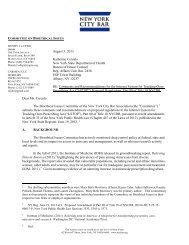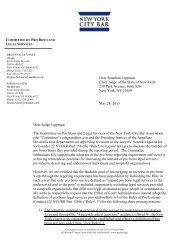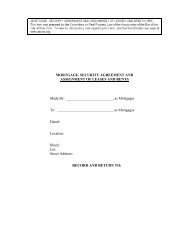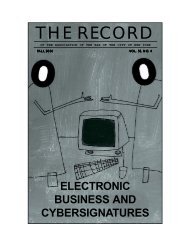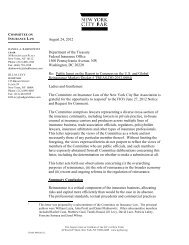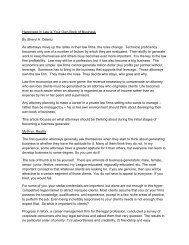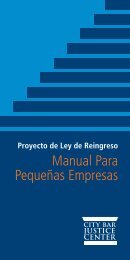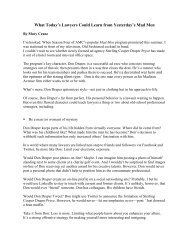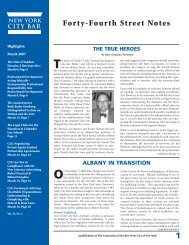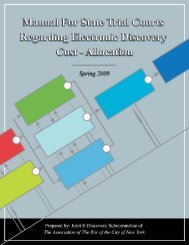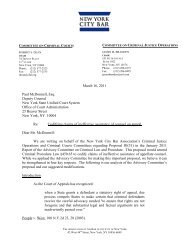2007 Issue 1 - New York City Bar Association
2007 Issue 1 - New York City Bar Association
2007 Issue 1 - New York City Bar Association
Create successful ePaper yourself
Turn your PDF publications into a flip-book with our unique Google optimized e-Paper software.
W E B S I T E A C C E S S I B I L I T Y F O R P E O P L E W I T H D I S A B I L I T I E S<br />
works under which a public accommodation’s Website is subject to Title<br />
III: (a) as a place of “public accommodation” in its own right, and/or (b)<br />
as one of the “goods, services, facilities, privileges, advantages, or accommodations<br />
of” a public accommodation.<br />
A. A Website Is a Place of “Public Accommodation”<br />
The statute does not define, nor set forth examples of, the term “place.”<br />
In trying to discern a meaning for “place,” some courts and commentators<br />
have made the twelve categories of “public accommodations” serve as<br />
limiting factors that define the sort of “place” to which Title III applies.<br />
The result is an assertion that a “place” is a physical “facility” and that<br />
the terms “place” and “facility” should be read to require a location people<br />
can enter bodily to offer or to seek goods and/or services. No such limitation<br />
appears in the ADA. 17<br />
(E) a bakery, grocery store, clothing store, hardware store, shopping center, or other<br />
sales or rental establishment;<br />
(F) a laundromat, dry-cleaner, bank, barber shop, beauty shop, travel service, shoe<br />
repair service, funeral parlor, gas station, office of an accountant or lawyer, pharmacy,<br />
insurance office, professional office of a health care provider, hospital, or<br />
other service establishment;<br />
(G) a terminal, depot, or other station used for specified public transportation;<br />
(H) a museum, library, gallery, or other place of public display or collection;<br />
(I) a park, zoo, amusement park, or other place of recreation;<br />
(J) a nursery, elementary, secondary, undergraduate, or postgraduate private school,<br />
or other place of education;<br />
(K) a day care center, senior citizen center, homeless shelter, food bank, adoption<br />
agency, or other social service center establishment; and<br />
(L) a gymnasium, health spa, bowling alley, golf course, or other place of exercise or<br />
recreation.<br />
17. The statute uses three different terms to describe the categories of covered “public accommodations”:<br />
“places” of lodging, exhibition or entertainment, of public gathering, of public<br />
display or collection, of recreation, of education and of exercise, 42 U.S.C.A. §§<br />
12181(7)(A),(C),(D),(H),(I),(J),(L); “establishments” serving food or drink, offering sales or<br />
rentals, offering services (such as travel service, shoe repair service, insurance, health care)<br />
and offering social services (such as day care or adoption), id. §§ 12181(7)(B),(E),(F),(K); and<br />
“station[s] used for specified public transportation.” Id. § 12181(7)(G). “The term ‘specified<br />
public transportation’ means transportation by bus, rail, or any other conveyance (other than<br />
by aircraft) that provides the general public with general or special service (including charter<br />
service) on a regular and continuing basis.” Id.§ 12181(10). Any assertion that Congress<br />
intended to limit applicability of Title III to a certain size or type of “place” is even more<br />
absurd than would be a claim Congress excluded from coverage five of the twelve categories<br />
of “public accommodations” it described by using a term other than “place.”<br />
2 0 0 7 V O L. 6 2 , N O. 1<br />
123



